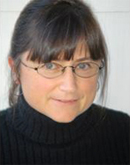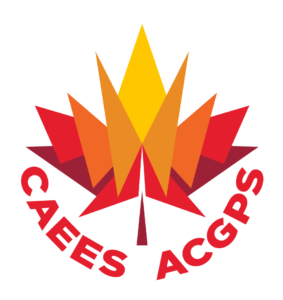Plenary Papers
 |
Tracy Monk, MD. Family Physician British Columbia Title of Presentation: The Importance of Community Involvement and Engineering Advocacy on the Road to School Seismic Safety in British Columbia |
Dr. Tracy Monk is a family physician in Vancouver BC with degrees from Bryn Mawr and McGill (MD). Monk became politically activated in 2003, when she co-founded Families for School Seismic Safety (FSSS), a parent-led advocacy group. Her relentless efforts led the Provincial Government of BC to make a $1.5 billion commitment to bring all BC schools up to acceptable seismic life safety standards within 15 years. Her efforts and those of FSSS have been widely recognized and have won her awards including the 2004 Magazine Today’s Parent’s “For Kid’s Sake Award”. Key components to the FSSS approach were an alliance with the engineering community in educating government and the population about the risks and the solutions, and the incorporation of a public health approach to the problem. In 2005 Monk presented at the UN World Conference on Disaster Reduction on the importance of prioritizing schools and hospitals in hazard mitigation and has given related presentations around the world to groups of engineers and seismologists about how the case study of BC can be an example of the broader benefits which flow from taking a multidisciplinary approach.
 |
Arthur C. Heidebrecht, Ph.D., P.Eng. Professor Emeritus McMaster University Title of Presentation: Development of National Building Code of Canada (NBCC) Seismic Provisions, Past, Present and Future |
Dr. Heidebrecht has had a distinguished career in engineering research, education and administration. He served as the Dean of the Faculty of Engineering at McMaster University prior to becoming the University’s Provost and Vice President Academic. Dr. Heidebrecht’s research interests include earthquake engineering and structural dynamics, seismic analysis of buildings and nuclear power plant structures, and seismic qualification of equipment in nuclear power plants, and he has widely published in these areas. As a long standing member of the Canadian National Committee for Earthquake Engineering, the committee responsible for developing and recommending the seismic loading provisions of the National Building Code of Canada (NBCC), he has actively participated in the development of several generations of the seismic design provisions of NBCC. Dr. Heidebrecht is the recipient of numerous awards and honours including the Gzowski medal of the Canadian Society for Civil Engineering, the T.K. Hsieh award of the Institution of Civil Engineers, the Fellowship of the Canadian Society for Civil Engineering, and the Fellowship of the Canadian Academy of Engineering. In 2002 McMaster University conferred upon him the Honorary Doctor of Science degree.
 |
David M. Boore, Ph.D. Geophysicist U.S. Geological Survey Title of Presentation: Predicting Earthquake Ground Motion in North America |
Dr. Boore’s research interest is in the various aspects of the problem of estimating the ground shaking from large earthquakes; he has published over 190 papers on this subject, with topics ranging from the seismic source to site response. He has served as a member of the U.S.-Japan Panel on Wind and Seismic Effects; seismic consultant to the Department of Energy's Tank Seismic Experts Panel; seismic consultant to the Advanced Light Water Reactor Equipment Seismic Qualification Panel; member of panel of seismic experts for probabilistic seismic hazard analysis of the proposed Yucca Mountain waste repository; member of review panel, Nuclear Regulatory Commission's Ground Motion Guidelines project; seismic expert for various Lawrence Livermore National Laboratory studies of probabilistic seismic hazard analyses of nuclear power plant sites; and Chairman of the Commission on Strong Motion Seismology of the International Association of Seismology and Physics of the Earth's Interior. Dr. Boore also served as the editor of the Bulletin of Seismological Society of America, and as member of the Editorial Board of the Journal of Earthquake Engineering. The U.S. Department of the Interior awarded Dr. Boore the Meritorious Service Award in 1993 and the Distinguished Service Award in 2005 in recognition of his research in many different areas of engineering seismology. He is a Fellow of the American Geophysical Union and an honorary member of the Seismological Society of America.
 |
Ronald O. Hamburger, SE Principal Simpson Gumpertz & Heger Inc., San Francisco Title of Presentation: Development of Next-Generation Procedures for Performance-Based Earthquake Engineering |
Mr. Hamburger is a structural engineer and senior principal with Simpson Gumpertz & Heger in San Francisco, California. He has more than 30 years of experience in structural design, evaluation, construction, research, education, and code and standards development. Mr. Hamburger is a member of building code and standards development committees for the American Society of Civil Engineers, the American Institute of Steel Construction, the American Welding Society, and the Building Seismic Safety Council and chairs several of these committees. He served as Project Director for Product Development for the FEMA/SAC Steel Project, led the task committee for general requirements on the ATC-33/FEMA-273/FEMA356 project and currently serves as Project Technical Director for a FEMA-sponsored project to develop next- generation performance-based seismic design guidelines. Following the terrorist attacks of September 11, 2001, Mr. Hamburger was appointed to the joint FEMA/ASCE Building Performance Assessment Team that studied the performance of the New York World Trade Center and surrounding buildings. He also maintains an active design practice, focusing on tall and large buildings. Mr. Hamburger is a past President of the Structural Engineers Association of California and President-elect of the National Council of Structural Engineering Associations.
Invited Speakers
 |
Michel Bruneau, Ph.D., P.Eng. Director, MCEER Professor, Dept. Civil, Structural, and Environmental Engineering University at Buffalo Title of Presentation: Innovations in Earthquake Resistant Steel Structures |
Mr. Bruneau has conducted extensive research on the seismic evaluation and retrofit of existing steel bridges and buildings. He has published over 300 technical publications related to his research, has co-authored the book "Ductile Design of Steel Structures", and has received many awards for his research and publications. Dr. Bruneau has conducted numerous reconnaissance visits to disaster stricken areas. He is a member of many technical committees, including the Canadian CSA-S16 Steel Design Standard, the American Institute of Steel Construction (AISC) Seismic Design Provisions Committee, the Seismic Committee of the Canadian Highway Bridge Design Code. He served on the BSSC TS6 Subcommittee on Steel Structures for the 2003 Edition of the NEHRP Recommended Provisions for Seismic Regulations for New Buildings and Other Structures and on the NCHRP Project 12-49 for the development of Comprehensive Specifications for the Seismic Design of Bridges. He was the principal investigator for the $21 million versatile earthquake engineering experimental facility that opened in 2004 at the University at Buffalo, as part of the George E. Brown Jr., Network for Earthquake Engineering Simulation.
 |
James G. Mutrie, B.A.Sc., P.Eng. Principal Jones Kwong Kishi Consulting Engineers Title of Presentation: Seismic Design of High-Rise Concrete Buildings in Canada: A Designers Perspective |
Mr. James Mutrie has over 40 years experience in building design and has developed expertise in all areas of the seismic design of high-rise concrete. He began his engineering career as a Design Engineer at Read Jones Christoffersen Ltd and later became its Shareholder and Director. During his 18 years with the firm, he served as project engineer on many significant architectural projects in Vancouver. In 1984 he joined Jones Kwong Kishi Consulting Engineers as a partner. Over the past 22 years, Mr. Mutrie has been the Principal Engineer on many high-profile projects including, Waterfront Centre, Surrey "Central City" complex, Shaw Tower, and currently Living Shangri-La which will be the tallest building in Vancouver when complete. He has served on numerous technical committees including the Canadian Standards Association Committee A23.3 "Design of Concrete Structures" where he has been involved in the development of the Concrete Code since 1980. Mr. Mutrie was one of the principal authors of the 1984 edition of A23.3 Clause 21 "Special Provision for Seismic Design" and served as Chairman of the A23.3 Seismic Sub-Committee from 1986 to 2006. He is a member of the Canadian Association for Earthquake Engineering and a Fellow of the Canadian Society for Civil Engineering.
 |
Dr. Vilas Mujumdar, Ph.D., MBA,
P.E., S.E. Program Director National Science Foundation, U.S.A Title of Presentation: A Framework for Interdisciplinary Research to Minimize Seismic Risk to Society |
Dr. Vilas Mujumdar, whose Bachelor’s and Master’s degrees were in civil engineering, holds a doctorate in Public Administration/Public Policy specializing in seismic risk. Following a service of 25 years in private industry he served for 9 years as Chief of Operations with the Division of the State Architect of California, after which he joined the National Science Foundation. As Program Director at NSF, he is responsible for the oversight of 3 Earthquake Engineering Research Centers, and coordination of earthquake engineering integrated multidisciplinary research with other divisions of NSF. He manages the review and recommendation process for establishing new Engineering Research Centers in Civil Infrastructure and also coordinates public policy research for various Engineering Research Centers. Dr. Majumdar has won numerous awards for his work and many of his projects are published as feature articles in Engineering News record. He served on and chaired numerous committees of ASCE, ACI, SEAOC, TMS and BSSC. Dr. Majumdar is a Fellow of the American Concrete Institute, the American Society of Civil Engineers, the Prestressed Concrete Institute, and The Institution of Structural Engineers (UK). He has authored over 45 papers on various aspects of seismic risk, design, and structural engineering issues.
